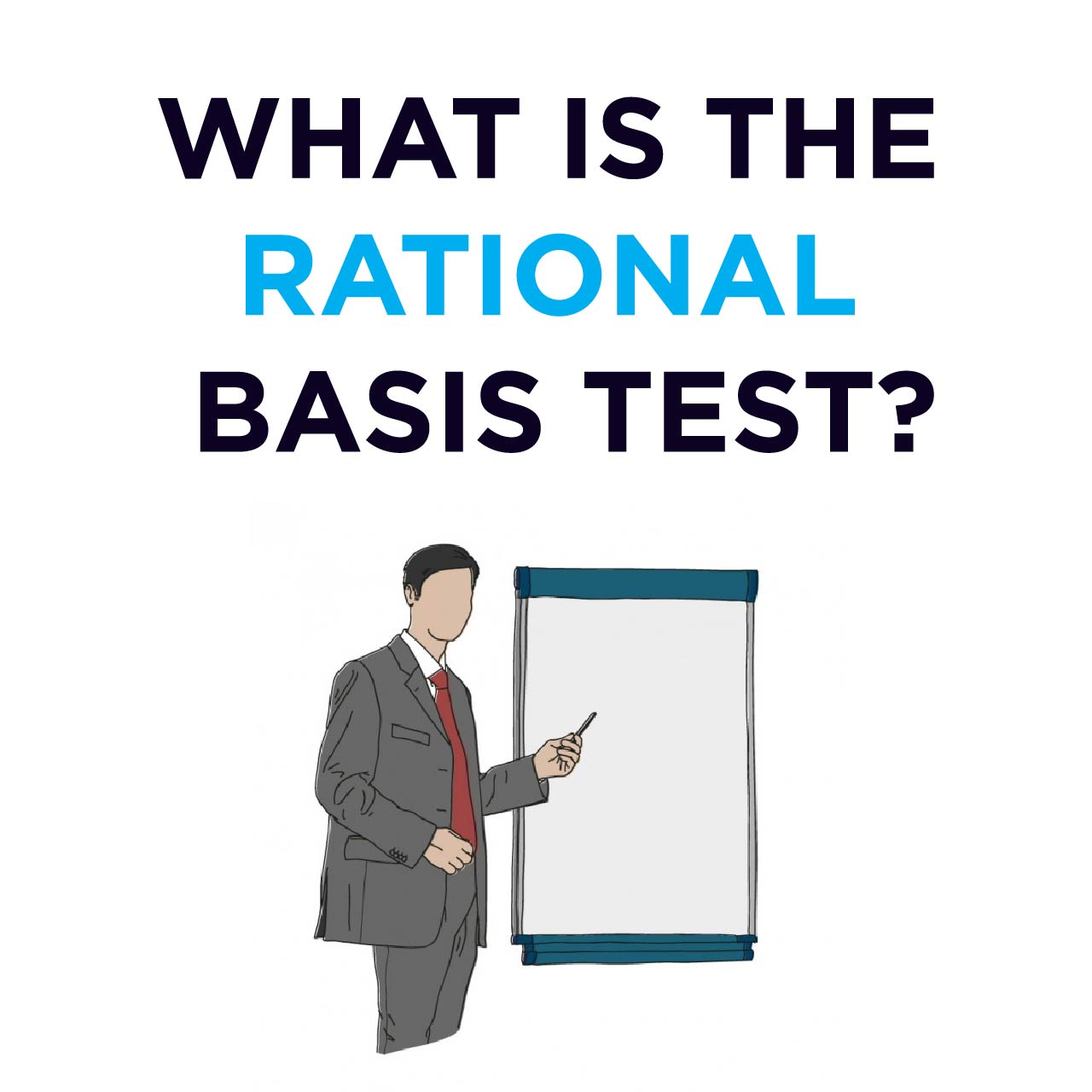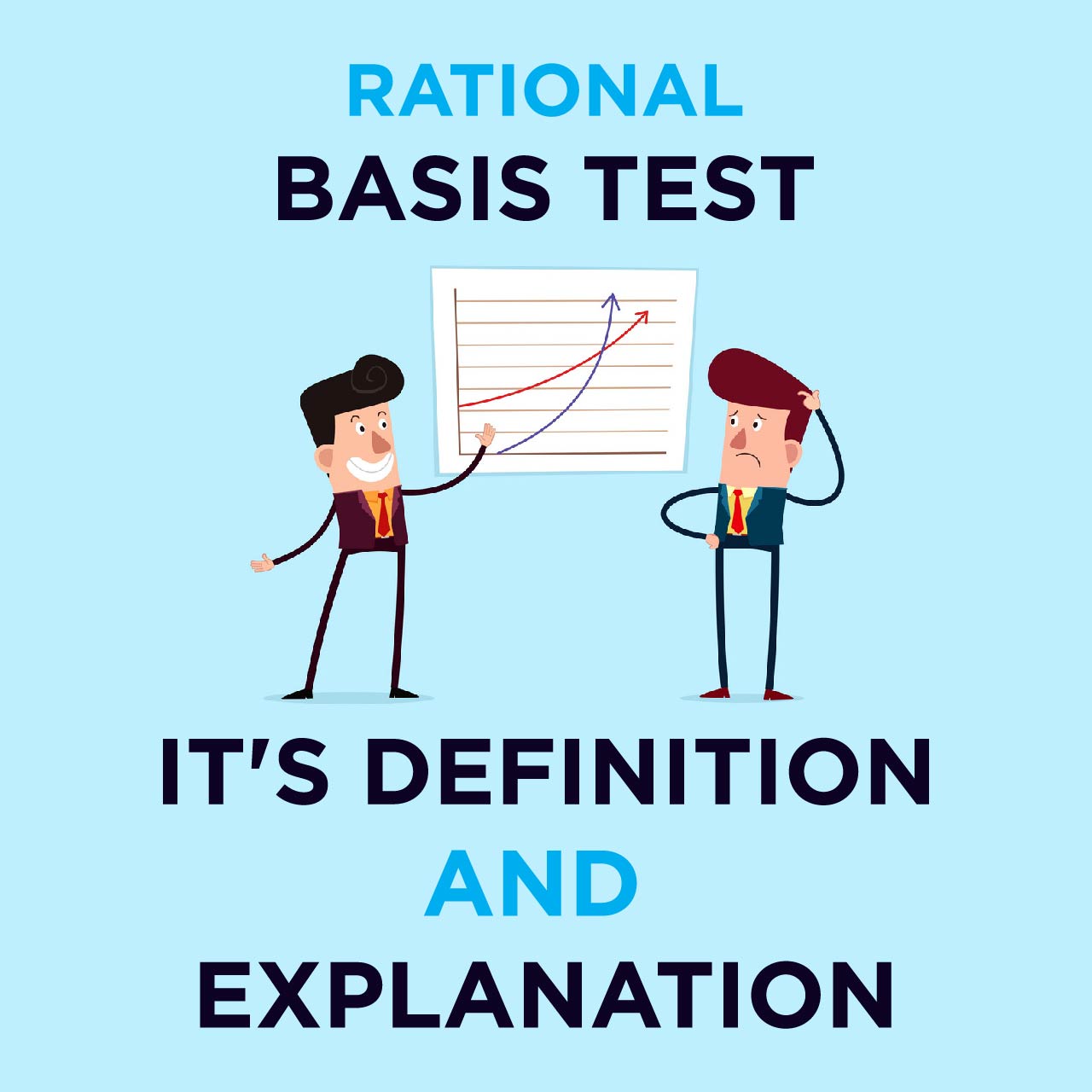Table of Contents
Rational Basis Test is used to determine whether a law or governmental regulation or action violates the equal protection clause. The rational basis test is used in most circumstances, such as reviewing economic rules. The test is less intensive than “strict scrutiny” or “intermediate review,” which are employed when legislation affects certain types of personalities that the Supreme Court has determined are due to additional protection because they have been discriminated against historically.
For example, decisions that affect characters based on their race, a “suspect classification,” are subject to severe scrutiny and must be justified by the government with a compelling design. Laws affecting women differently receive an intermediate examination and must be explained by the government by exceedingly persuasive justification.
In U.S. constitutional rule, consistent basis analysis is the common standard of study that courts apply when considering constitutional questions, including due manner or equal protection problems following the Fifth Amendment or Fourteenth Amendment. Courts demanding rational basis review queries to determine whether a law is “rationally related” to a “legitimate” government interest, whether extremely or hypothetical. The higher levels of scrutiny are intermediate scrutiny and strict examination. Heightened scrutiny is demanded where a suspect or quasi-suspect classification is included, or a fundamental right is connected.

What is the Rational Basis Test?
Imagine that you are a judge. When you think of the U.S. Constitution, you apparently think of a big list of rules that everyone is expected to support. This discernment (though a bit simplistic) is pretty straightforward. As a mediator, it’s your job to understand and connect those rules to many legal situations.
With its seven articles and its twenty-seven amendments, the Constitution is the supreme law of the land. The task of interpreting and applying this venerable document belongs to the government’s judicial branch, which encompasses the court system. The court arrangement must apply rules of interpretation to plead questions of constitutional law. These rules are known as standards of review, and they are used to determine whether a particular direction or government action is constitutional.
One standard of review used frequently by courts to resolve constitutional quandaries is the responsible basis test. Under the reasonable basis test, a court must ascertain whether a law is rationally reported to legitimate government importance. If the answer is ‘yes,’ the law is representative and can be asked.
Invented out of the Supreme Court’s whole cloth, the responsible basis test applies in all constitutional claims that do not involve rights the Supreme Court has considered “fundamental” such as free speech, religion, and voting. Contrary to its name, the rational basis test is not reasonable. It is not concerned with the factual basis for the government’s actions. It is not a “test” of anything except administrative willingness to turn a hidden eye to other branches’ misconduct.
The Rational Basis Test is Constitutional
What makes the RBT so toothless? The Supreme Court has stated that under rational basis review, the government’s proper ends in passing a given law are “entirely irrelevant” and those laws may be based on “rational consideration unsupported by testimony or empirical data.” Those inquiring about challenging a law under rational basis analysis must “negative each conceivable basis” for the government’s actions, despite individuals that are completely speculative or hypothetical. If the court can imagine “legitimate” importance that might be served by the challenged law, that’s enough to support it.
A test was less concentrated than strict scrutiny, or an intermediate column that involves a determination of whether a statutory or administrative classification of characters (as by age or offender status) has a rational basis and does not deny equal protection under the Constitution [if the category neither affects a fundamental right, nor creates a suspect classification, nor is based on gender, then the responsible basis test is applied “Charlton v. Kanata, 815 P.2d 946 (1991)”] also called reasonable relationship test the government’s proper ends is irrelevant.
Judges will not seek to determine the government’s actual futures in passing or enforcing a given law but will uphold legislation if a legitimate lot can be hypothesized.
When Is the Rational Basis Test Applied?
Let’s look at an example to understand better how the rational basis test works. Say that a standing law in New Hampton bans the application of medicine without permission. Dave is very interested in practicing medicine, but he has neither the time nor the patience to go to medical school and obtain a permit. Dave maintains that he has a constitutional right to continue the career of his choosing and thinks the New Hampton law is undemocratic.
Under the rational basis test, Dave is questionable to prevail. New Hampton has an interest in licensing its doctors to protect the community at large, and the law prohibiting the unlicensed practice of medicine is related to that interest. Unfortunately for Dave, a New Hampton court would certainly uphold the law’s constitutionality because it passes the rational basis test.
Below the RBT, the government maintains the benefit of an effectively irrebuttable assumption of constitutionality. The result? A hollow charade in the community of meaningful judicial review. Conservatives that the Framers held sacred are trampled upon in common sight.
In the context of constitutional law, the responsible basis test is acknowledged to be the ‘lowest’ standard of review. In other words, it’s easy for a law to pass a reasonable basis test because the bar is relatively low.
FAQs
[wps_faq style=”classic” question=”Q: What is the rational basis test used to determine?”]A: A test is used to determine whether a law or administrative regulation or action violates the same protection clause. The rational basis test is practiced in most circumstances, such as reviewing economic regulations.[/wps_faq][wps_faq style=”classic” question=”Q: What is the rational basis examination, and why is it important?”]A; Rational basis examination tests whether the government’s actions are “rationally compared” to a “legitimate” government benefit. The Supreme Court has nevermore set forth standards for restricting what constitutes a legitimate government interest.[/wps_faq][wps_faq style=”classic” question=”Q: What are strict scrutiny and rational basis test?”]A; The intermediate examination test and the strict scrutiny test are considered more rigorous than the rational basis test. The rational basis test is generally used when no fundamental conservatives or suspect organizations are at issue. The rational basis test is also introduced as “rational analysis.”[/wps_faq]

